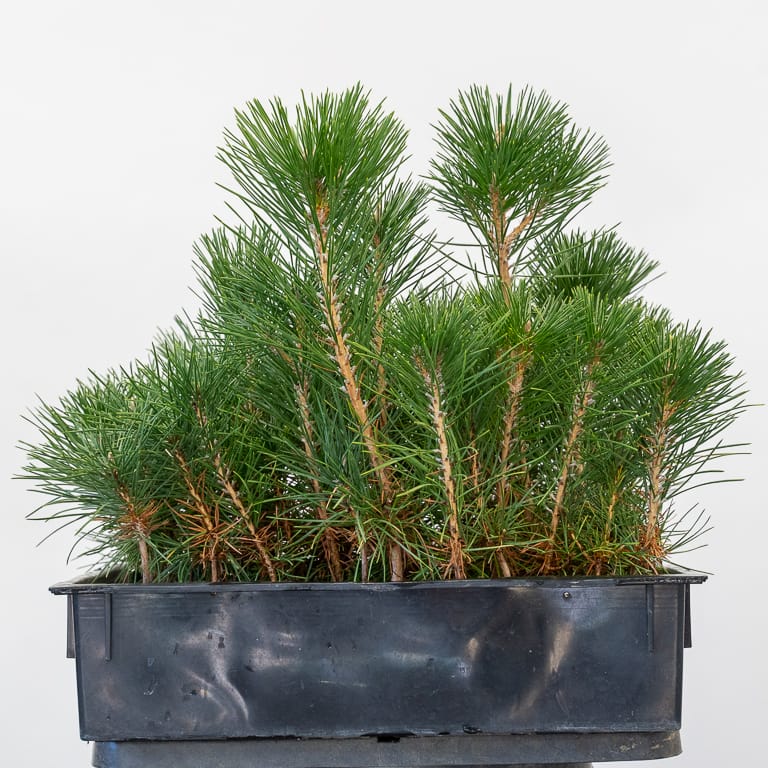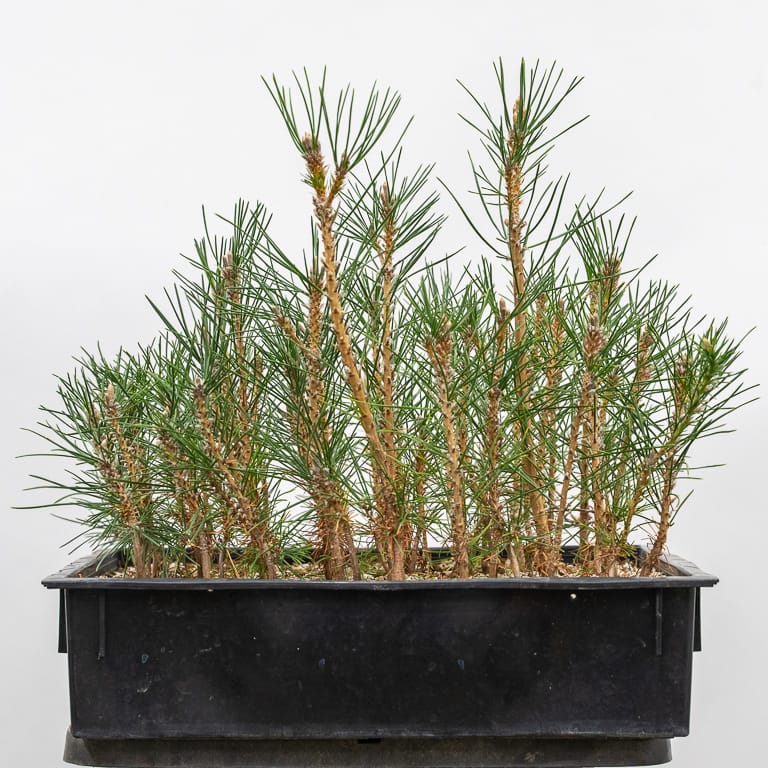A few years ago I came across some tall and slender black pines that made a good starting point for creating literati style bonsai (see examples at “Decandling young bunjin pines“).
The trees were the result of neglect. For several years they’d grown, fifty to a flat, under a bench where they received little light. I wanted to see if I could reproduce the effect so I filled a flat with seedlings last year.
The trees grew well this year, but as the foliage became dense, I wanted to thin the needles to preserve low branches and discourage aphids.

Two year-old black pines

After thinning needles – 14″
I plan to let the trees grow for at least one more year in this container. I’ll consider repotting them next winter depending on how many roots develop over the coming year.
There’s a chance I’ll add some movement to the trees while they’re in the flat, but I’m more likely to wire them when I repot one or two years from now.
Subscribe to Bonsai Tonight
New Posts Delivered Every Tuesday and Friday
Charles Mosse says
Who’d a thunk it since we always like to space our trees. Growing the seedlings that close together is a great idea. Such an obvious way to grow that type of trunk. Thinking outside of the box. They look very strong.
Jonas Dupuich says
Thanks Charlie! If they go too long in the same pot the roots become a tangled mess, but I’m hoping that it won’t be too bad after 2-3 years.
Matt says
Interesting idea for starting group plantings as well!
Jonas Dupuich says
Exactly! I’ve been planting clusters of 2-7 seedlings per pot with the idea of making group plantings or clump-style like trees when they’re bigger.
Rommel Paredes says
Great stuff, one thing I’ve noticed with common commercially produced seedlings that normaly leaves you not much choice but bunjin/ literati style are the individual pots that they use between 0 – 2 years of seedling stage they tend to be really small, I guess to save on soil mixes, hence gives you that straight up slender trunk. This is a great alternative approach that doesn’t compromise the young tree’s health and really intersting as to how you can intentionally lead trees to certiain styles. Thank for sharing Jonas
Jonas Dupuich says
Thanks, Rommel! Now the question is when to start bending the trees – while they’re planted together or later when they’ve been separated.
steve perea says
I have a few I tried to wire when they were small, it was easy to break the new little branches so I stopped. I have a few hundred JBP & JRP most from cuttings so great root flair but very short trunks. I do my first few months under the grow light so that I can get a seedling ready to cut in 15 days, then 15+ in the dome on a heat mat and then I sort them and grade them on the pot label, if they are cowboys I recut and back in the dome. I have notice the ones further away from the light can get leggy so I will have to let them grow and see if I get longer trunks.
Jonas Dupuich says
That sounds like a great approach Steve – you won’t be sorry you took so much care with the roots down the road. I hope I get a chance to see some of these trees someday!
Zack Clayton says
Interesting approach to preparing for group plantings. I usually space them out in a shallow tray with 4 ” and then to 2″ of soil after a year. I get a nice flat root mass and better lower branching to get the trunk thick. It is more of a long term project than the average grove or forest planting, but I have better results after the styling. I think for the bunjin or literati use the tight packing would be advantageous.
Jonas Dupuich says
Hi Zack – that’s smart about keeping the trees in shallow containers. Forcing lateral root growth is the best way to get a nice shape at the base of the trunk. It’s likely the best approach for literati trees too. The main advantage of keeping the trees close together may be efficiency of space (which means I’ll need more space when it’s time to repot!).